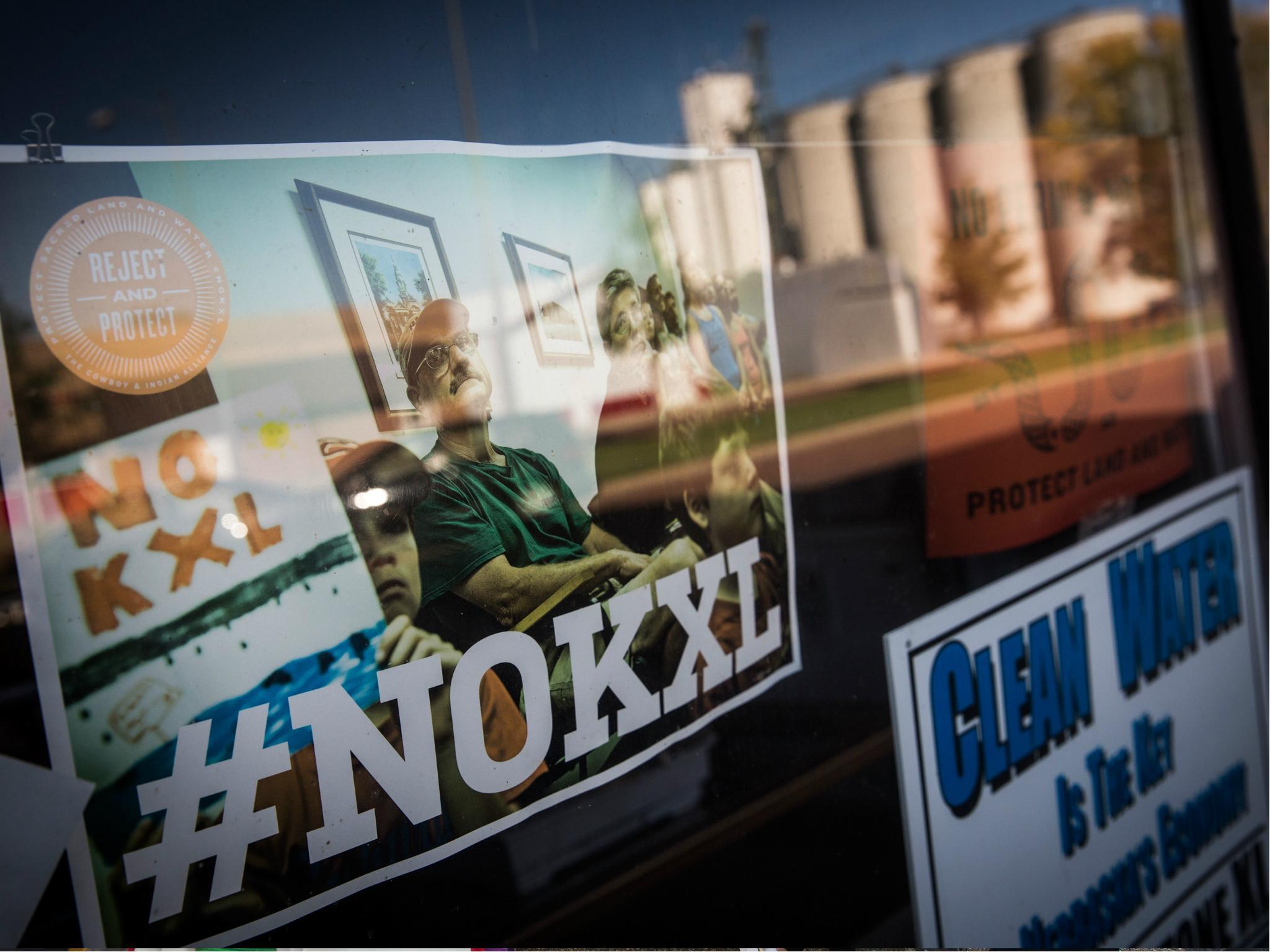Keystone XL pipeline: Nebraska approves final stage of controversial oil route
It is not the preferred route of the company, but this was the last regulatory hurdle for the $8bn project

Your support helps us to tell the story
From reproductive rights to climate change to Big Tech, The Independent is on the ground when the story is developing. Whether it's investigating the financials of Elon Musk's pro-Trump PAC or producing our latest documentary, 'The A Word', which shines a light on the American women fighting for reproductive rights, we know how important it is to parse out the facts from the messaging.
At such a critical moment in US history, we need reporters on the ground. Your donation allows us to keep sending journalists to speak to both sides of the story.
The Independent is trusted by Americans across the entire political spectrum. And unlike many other quality news outlets, we choose not to lock Americans out of our reporting and analysis with paywalls. We believe quality journalism should be available to everyone, paid for by those who can afford it.
Your support makes all the difference.Nebraska has announced its approval of the controversial Keystone XL crude oil pipeline, which is set to run through part of the state.
The state’s Public Service Commission vote was only three to two in favour after a series of hearings and taking into consideration half a million public comments on the matter.
The approval is the last major regulatory hurdle before TransCanada, the company building the pipeline, can begin construction on the project that is supposed to take oil sands from Alberta, Canada, to the American Gulf Coast.
In a twist to the decision, seen as a blow to the efforts of thousands of protesters opposing the pipeline, the commission did not approve TransCanada’s 275-mile (443 km) preferred route through the state but an alternate, longer one.
Called the “mainline alternative”, the approved route runs through Montana, South Dakota, and down the centre of Nebraska – almost following along the existing Keystone pipeline on the Kansas-Nebraska border.
The whole pipeline project – meant to augment the existing pipeline system – is nearly 1,200 miles long, valued at $8bn (£6.5bn), expected to transport 830,000 barrels of oil a day, and is set to end in Steele City, Nebraska.
The Keystone XL pipeline has been on hold since 2015, when previous President Barack Obama rejected a presidential permit required because the pipeline would cross over the international border, over concerns of carbon emissions and pollution.
However, in March 2017 President Donald Trump signed an executive order to restart the project.
The Nebraska decision comes on the heels of TransCanada’s existing Keystone system spilling 200,000 gallons of oil in South Dakota.
Though the decision is open to appeal, the last steps are for the Trump administration to approve the permits for the project as well as dealing with a host of lawsuits from environmental advocacy groups and Native American tribes who say their land and water resources would be polluted.
Montana and South Dakota – where the pipeline would also pass through – have already approved TransCanada’s request.
As The Hill reported: ”Crystal Rhoades, an Omaha-area commissioner, questioned the economic impact of the pipeline on Nebraska and warned that a spill from the pipeline would impact environmentally sensitive areas of the state. She also said it could violate the rights of landowners in the state.”
With the “alternative mainline”, approximately 40 landowners in the state would be impacted whose property would not have previously included pipeline construction.
According to the Lincoln Journal Star, the majority of the owners are in Madison County, Nebraska. The original Keystone pipeline does not run through their property, nor was that land included in TransCanada’s preferred route.
The company has not yet shared publicly whether the landowners along the approved route have been contacted.
Michael Brune, the executive director of the Sierra Club, said: “It is disappointing that the Public Service Commission sided with a foreign oil company over the interests of American communities who would be threatened by this pipeline, but we remain confident that Keystone XL will never be built.”
A larger issue is also whether TransCanada has decided whether the project, after years of protests and legal battles, is even still financially viable.
The company said it would make a decision within the next few months, said to be dependent on the Nebraska decision as well as how interested their customers – oil companies – would be in using the pipeline.
TransCanada president Russ Girling was confident the permits and lawsuit issues could be resolved, saying the company executives “expect support for the project to be substantially similar to that which existed when we first applied for the Keystone pipeline permit... To be clear, production of Canadian heavy oil continues to grow, and the need for new pipeline transportation capacity remains high.”
Zachary Rogers, a Houston-based analyst for energy research and consulting firm Woods Mackenzie, told CNBC that Canadian companies have been shipping their product via rail, adding to their overall costs.
“Western Canada has been held captive by geography and hasn’t been able to cheaply access the markets,” Mr Rogers said.
Join our commenting forum
Join thought-provoking conversations, follow other Independent readers and see their replies
Comments